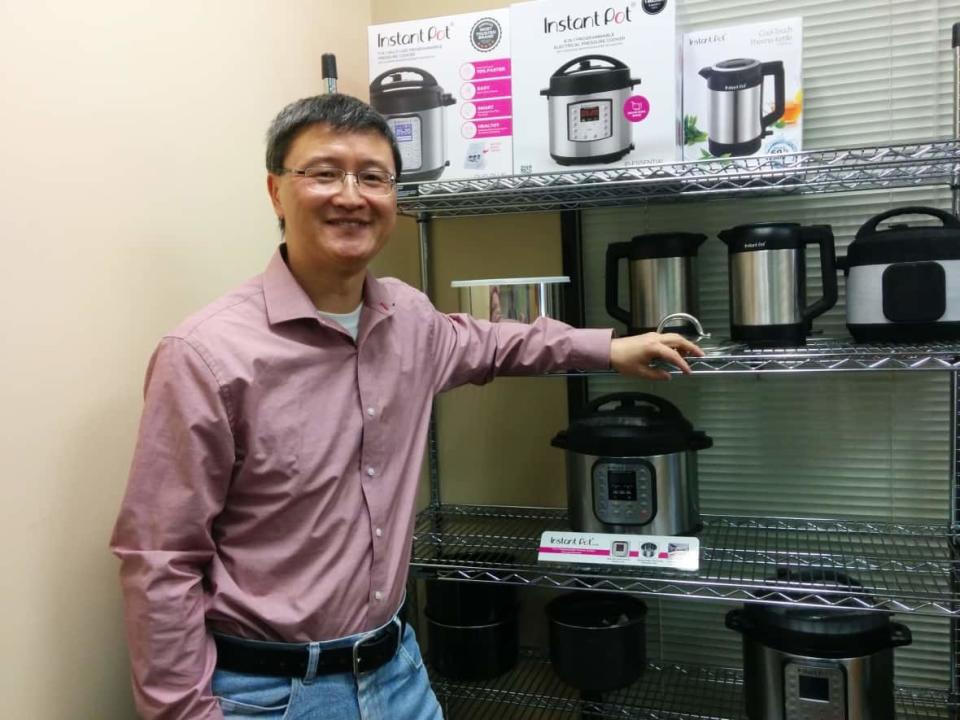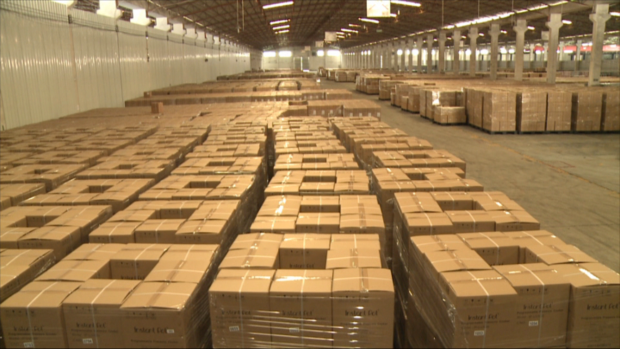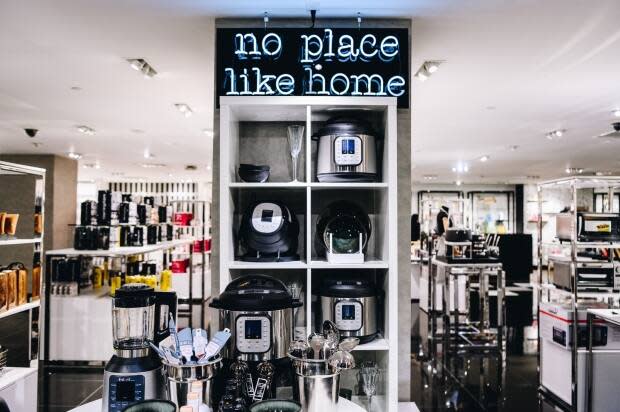Instant Brands, maker of Instant Pot and Pyrex cookware, files for bankruptcy

The company that makes kitchen staples like CorningWare, Pyrex and the Instant Pot has entered bankruptcy proceedings in the U.S. and Canada.
Illinois-based Instant Brands said Monday that it has "initiated a voluntary court-supervised Chapter 11 process," due to an unmanageable debt load.
"Tightening of credit terms and higher interest rates impacted our liquidity levels and made our capital structure unsustainable," CEO Ben Gadbois said in a news release.
In court filings, the company says it generated operating cash flows of just $17.9 million US in the first three months of the year. That relatively meagre figure is a sharp contrast to the more than $500 million US worth of debt on its books.
Eric Snyder, head of the bankruptcy department at New York-based law firm Wilk Auslander, says that's an unsustainable amount of debt for a company of its size.
"For a company like this to have $500 million in debt is excessive and they can't support it," he said in an interview Tuesday. He says the company was likely able to manage its debts while rates were low, but the recent slew of lending-rate hikes has caught up with them.
"At eight or nine or 10 per cent, that's $50 million a year just to service the debt — it's impossible to do," he said. "You can only sell so many Instant Pots."
As of Monday, the company had about 2,000 employees around the world, including 30 in Canada, most of whom "perform sales and marketing activities as well as customer support."
Rise and fall
The company's current tough times are a marked reversal from the explosive growth the company was seeing a few years ago. Most of that came from the Instant Pot, which was invented by former Nortel engineer Robert Wang in Ottawa in 2009.
Prior to the pandemic, Wang's company was selling hundreds of millions of dollars of the devices every year. It was one of the top sellers on Amazon's annual Prime Day.
In 2019, his company merged with Illinois-based Corelle Brands, the owner of Pyrex, CorningWare, SnapWare and Corelle. The company, which also includes brands like Chicago Cutlery and Visions, claims that 90 per cent of households in the U.S. have at least one of their products in them.
The combined company soon expanded the Instant brand name into new products beyond its eponymous cooking device, including air purifiers and coffee machines.

But those new Instant-branded gadgets weren't enough to turn the tide of slowing sales. According to ratings agency S&P, the company's sales declined by almost 22 per cent in the first quarter of 2023, the seventh quarterly contraction in a row.
S&P downgraded the company last week and warned that "absent external funding or debt relief, we anticipate Instant Brands will face a liquidity shortfall over the near term."
"The company's performance continues to deteriorate amid a weakening macro environment and lower consumer spending on discretionary categories," S&P says.
The company didn't disclose exact sales figures in its filings, but market research firm NPD Group says the product category of "electronic multicooker devices" which is dominated by Instant Pot, hit $758 million worldwide in 2020.
By 2022, industry-wide sales had plunged 50 per cent to $344 million.
Liquidation possible
The company says it has lined up more than $133 million in funding to cover expenses such as employee salaries and benefits, pension obligations, paying suppliers and other obligations while it tries to restructure.
Snyder says the company is trying to buy time to come up with a solution that will let them continue to operate, but "it's really up to the creditor at this point because of the size of the debt, whether they are going to let them continue to fund losses."
He says he wouldn't be surprised to see the company be forced to liquidate.
"They took on too much debt and now you have a company that was moderately profitable now underwater because of the debt load," he said. "That's a tale as old as time."

When reached over the phone by CBC News for his thoughts on the bankruptcy filing on Tuesday, Wang declined to comment.
In 2021, at the height of its popularity, the company borrowed $450 million US worth of bonds, due in 2028, to expand its business and develop new product lines. Those bonds were changing hands on Tuesday at 22 cents on the dollar — a sign investors don't think there's much chance they'll get their money back.
Alongside the U.S. bankruptcy proceedings, Instant Brands is undertaking what it calls "ancillary proceedings" in Canada under the Companies' Creditors Arrangement Act.
Broadly speaking, the CCAA is the Canadian equivalent of Chapter 11 of the U.S. bankruptcy code. Companies enter both processes when they are seeking the court's help to protect them from their creditors while they try to come up with a way to restructure the business and continue to operate.
Outside of the U.S. and Canada, the company also has operations in Singapore, England, South Korea, Australia, Taiwan and China. Those parts of the business are not included in the bankruptcy proceedings.

 Yahoo Finance
Yahoo Finance 